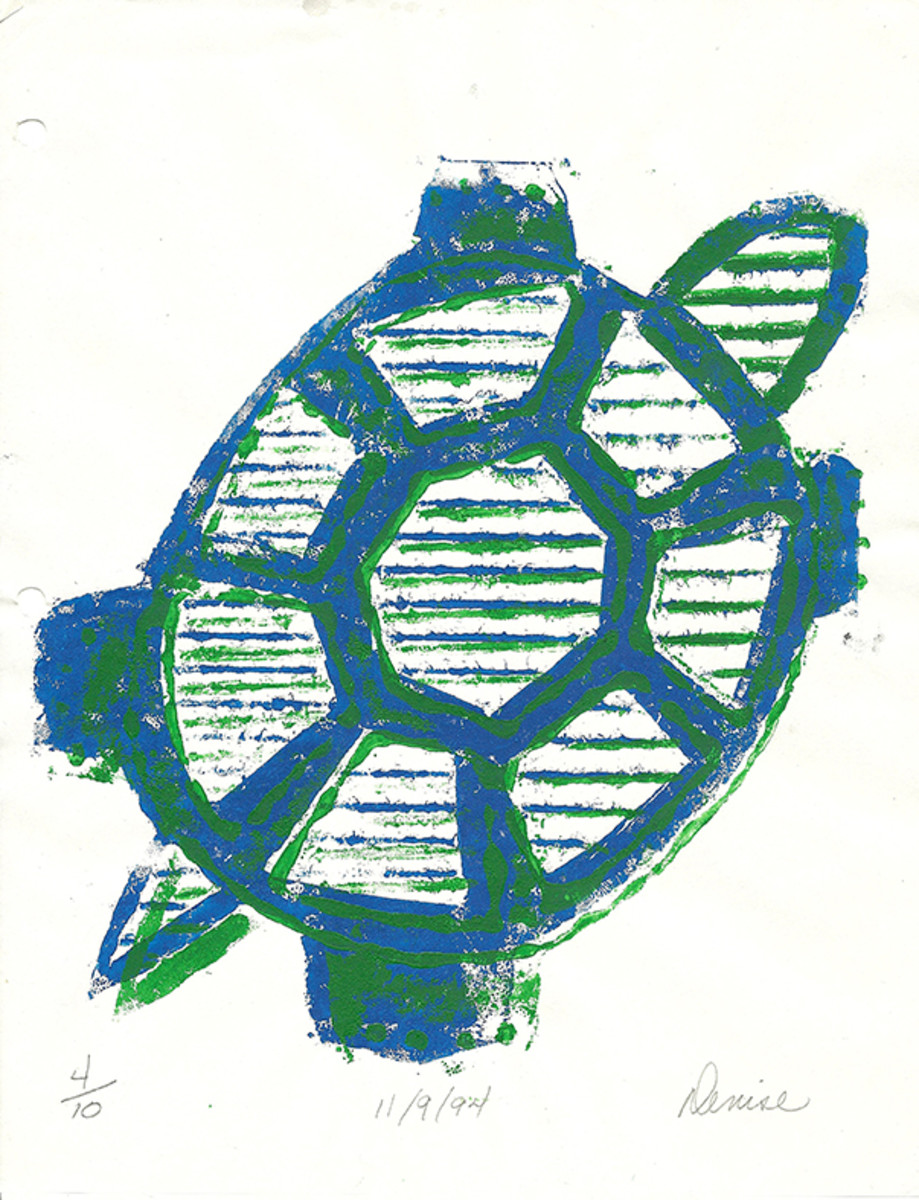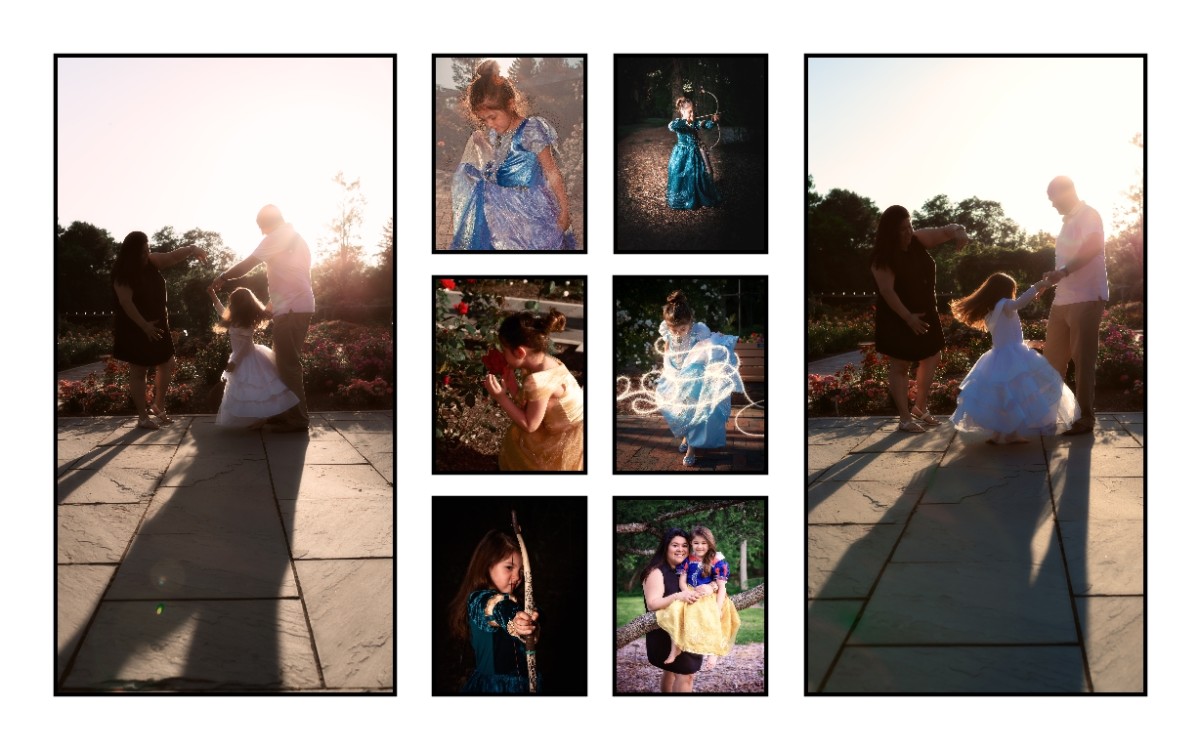Vivid-Pix RESTORE Brings Old Pictures Back To Life And Is Now Updated
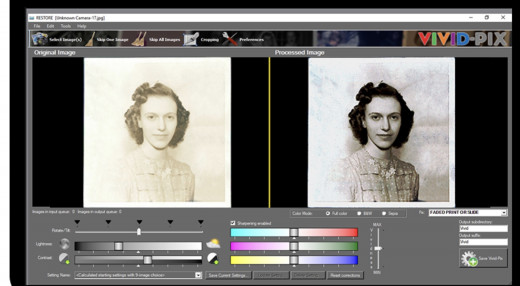
Old Photos Needn’t Disappear
So everybody has a smartphone with a camera and it’s easier and more convenient than having a regular camera. Plus it’s digital so you don’t have to worry about film or not being able to see the picture right away. On the negative side is that most people never bother making prints of their digital pictures and so they only get seen on a small screen and there’s no such thing as a photo album that can span decades of viewing.
But there’s an even bigger problem with “conventional” pictures that are in photo albums or even framed — they tend to fade over time, black and white less so but color prints pretty heavily, especially if they’re not being kept in dim light (sunlight and lights filled with ultraviolet rays being slow-death). To make matters worse, these valued regular prints often don’t have the negatives available (or color slides which were converted to prints and now have faded as well). So you’re stuck with a black and white print of great aunt Martha that’s faded or the color print of the front of your Grandfather’s shoe store where all the color seems to have been leached out and left a pale sickly tint in place. For sure you need the Vivid-Pix RESTORE. And while it has been updated (see below), the functionality and simplicity continues.
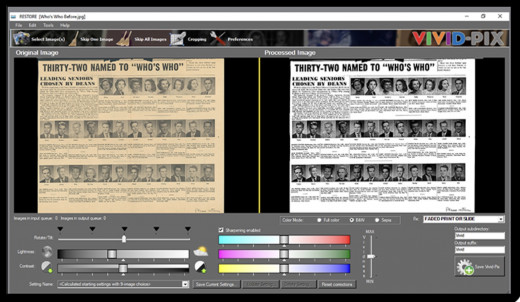
Say Hello To RESTORE
RESTORE works on modern PC and Macintosh computers and is the digital equivalent of the airbrush artist who “painted” on prints to correct for issues that made them miserable to view. It’s not like PhotoShop where you need to master countless tools, but is sensibly positioned image editing software for those with some understanding of what they want/need for a problematic print to have so that it looks good again. The program will guide you through the process, but allow you to do some modifications and tweaking — it’s partly the equivalent of putting in a dollar for a soda can to exit the machine, but you do need to choose what soda is going to be coming out.
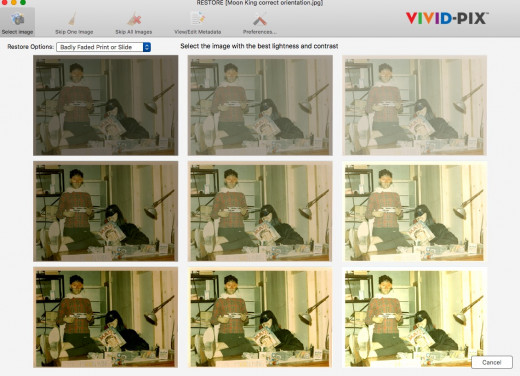
RESTORE Starts To Do Its Job
So we have an old color print (like from 1968) of us guys who used to make Super 8mm movies, and this has been on the bathroom wall ever since — 40+ years and counting and baking in fluorescent and sunlight has rendered it nearly colorless. So start by scanning the print so that there’s a digital file to work on. Most printers come with a scanner option, but there are services that will scan for you — the most important thing is to have that scanned digital file be of the highest resolution possible so that fine details are not lost. Once the black and white or color scan is done and the file transferred to the computer, it’s time to bring up RESTORE and load in the file.
There follows a series of steps to fine-tune choosing corrections or follow the program’s lead for restoring the print to its former glory. Adjust the colors to better make it look like it did or focus attention through cropping. Save a high-resolution JPEG or a TIF file for eternity, or have files automatically created for sharing on genealogy website or for emailing. But first if you want, add MetaData for searchable Tags, put in comments, all that good stuff. And create folders to store what’s been done so sloppiness gets pushed aside.
And yes, you can RESTORE on digital picture too (after all, that’s what any digital file is), although the need here might be minimal since digital never fades or exhibits color shifts. In the case of our picture, the orange of the mask has returned, as has the plaid shirt’s patterns plus more.
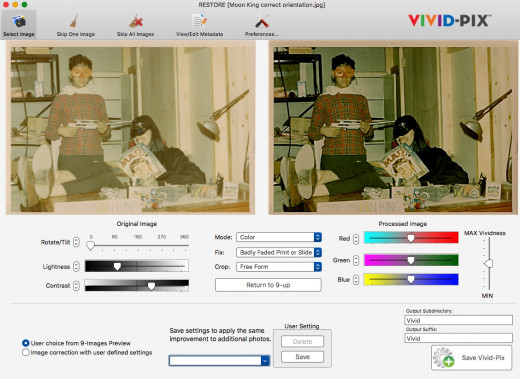
Make A Print
Now once all is done, take or send the corrected digital file to your favorite printing establishment to regain the past in your hand. Or get one of those LCD photo frames and load it in along with others for a non-stop display of your family’s history. Or as is the case here, do a color print using the same printer/scanner and replace it on the bathroom wall. Either way you’ve now a digital back-up for safety.
UPDATE!!
RESTORE has now been updated and features AI-powered working for a nubmer of improvements: metadata tagging for research purposes, more image formats to handle, crop/recalculate options for zeroing in on specific areas to fix (rather than having to go wholesale). Also it now organizes, notates and auto saves both the original image as well as the newly improved one.
The new RESTORE continues to retail for under $50.00 and can be a valuable addition to those looking to preserve the past in pictures — be they black and white or sepia or color (also documents). More importantly it can make those pictures come alive again. There’s even a free trial for those a bit hesitant about taking the plunge. More details can be found at https://vivid-pix.com

